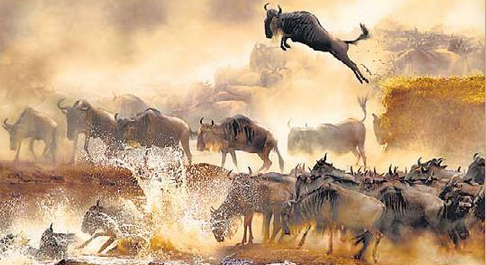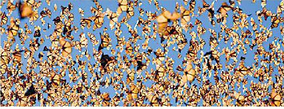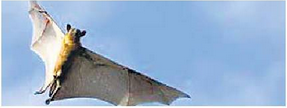Did you know about five of the largest migrations of the world?
Every year 2 million heads of this creatures crossover from Tanzania to Kenya.
The largest population of mammals lives in an area known as the Serengeti. It lies between Northern Tanzania and south-western Kenya in the equatorial region of East Africa. Wherever the green grass is getting ready, these wild animals follow, searching for greener pastures.
It is a circular movement, in a clockwise direction. Starting from early July to late September from Tanzania.
The transition starts with approximately 260,000 zebras followed by 1.7 million of wildebeest. Following them are hundreds of thousands of other plains game having around 470 thousand gazelles.

Photo credit: Dainik Bhaskar
This is the largest migration of mammals population in the jungles of East Africa, estimated to be 2 million of that 2.500000 get eaten by the lions and the crocodiles of the region. The predators follow the cycle for the fresh game on demand. Click here for one of the organized tours of the area.
Every year the Leatherback Tortoise travel ten thousand miles.
Sea Tortoise are known to migrate a long distance to search for food and breeding. They swim all the way from Norway to New Zealand.

Photo credit: Dainik Bhaskar
Their thick skin enables them to withstand the extreme cold climate and other variation of the temperature. Every three years they reach their place of birth.
Monarch Butterfly migration take five generations to complete their journey

Photo credit: Dainik Bhaskar
Monark butterfly is known to migrate from Mexico to Northern America spanning five generations. Around 30 million butterfly travel for the migration.
The Arctic Tern flies 1.5 million in its life.
The scientists have developed such a device that can record the movement of an Arctic Tern that on average fly 1.5 million miles in its lifetime. The bird flies approximately 44 thousand miles in a year from North pole to the South pole. On an average the bird can make three round trips to the moon in its life time.

Photo credit: Dainik Bhaskar
The straw-colored fruit bats fly to eat a particular fruit.
The migratory straw colored 8 million bats fly to eat a particular fruit from Congo to the Sanka National Park of Zambia. At any particular time, ten tons of these bats sit atop a single tree.

Photo credit: Dainik Bhaskar








